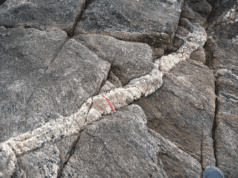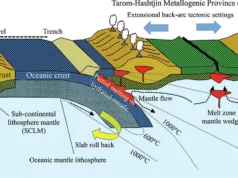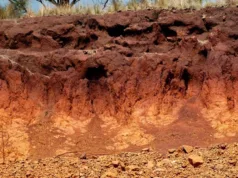SEDEX, which stands for Sedimentary Exhalative, refers to a type of mineral deposit that is formed by the precipitation of ore minerals from hydrothermal fluids that are expelled into a water environment, typically in a marine sedimentary basin. These deposits are significant sources of lead, zinc, and silver, and they are found in geological settings where certain conditions favor their formation.
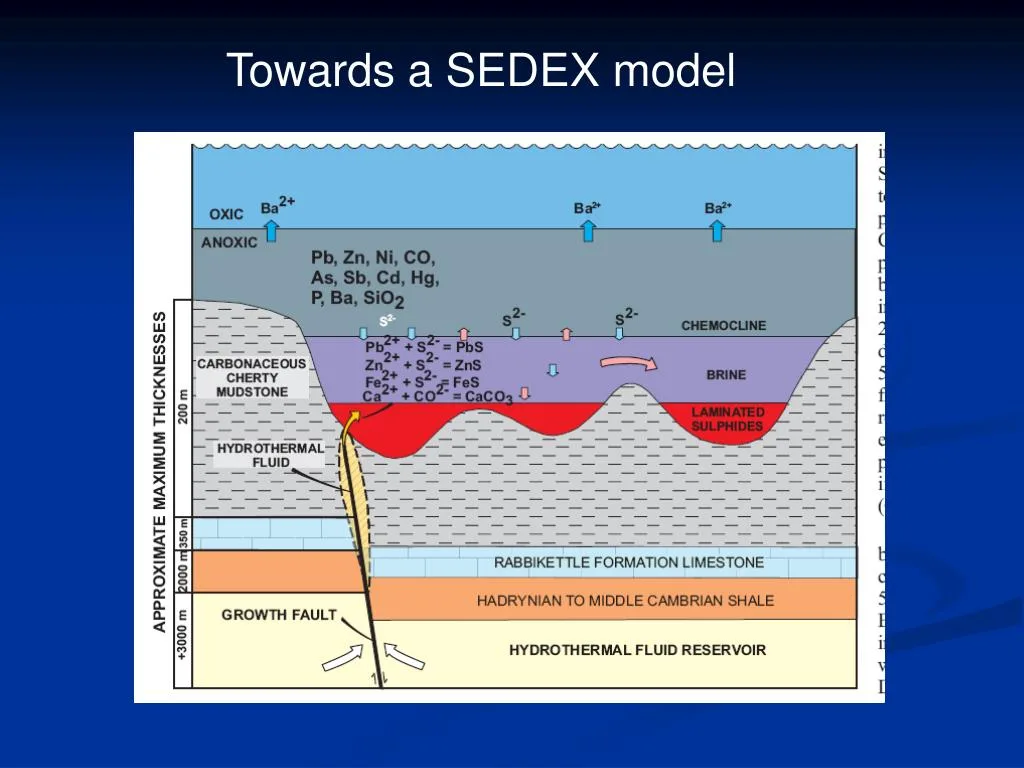
Definition and Characteristics:
- Formation: SEDEX deposits are formed through the interaction of hydrothermal fluids with sediments on the ocean floor. These fluids, rich in metals, are expelled from the Earth’s crust and rise through the sedimentary layers, depositing minerals as they cool.
- Minerals: The primary ore minerals found in SEDEX deposits include galena (lead sulfide), sphalerite (zinc sulfide), and various sulfosalts. Silver often occurs as a byproduct.
- Host Rocks: SEDEX deposits are commonly hosted in shale and other fine-grained sedimentary rocks. The ore minerals are often disseminated throughout the host rock.
- Stratigraphy: The formation of SEDEX deposits is often associated with specific stratigraphic horizons within sedimentary basins. These horizons may contain organic-rich material that facilitates the precipitation of metal sulfides.
- Association with Black Smokers: SEDEX deposits are sometimes associated with hydrothermal vent systems known as black smokers, where hot, mineral-rich fluids are discharged into the ocean.
Historical Background and Discovery:
The concept of SEDEX deposits gained prominence in the latter half of the 20th century as geologists sought to understand the genesis of certain sediment-hosted ore deposits. The recognition of SEDEX as a distinct deposit type evolved through the study of ore deposits around the world.
One of the earliest significant SEDEX deposits identified is the Sullivan Deposit in British Columbia, Canada, discovered in 1892. However, it wasn’t until the mid-20th century that the geological community began to recognize the broader significance of SEDEX deposits as a class of mineralization.
Ongoing exploration and research continue to expand our understanding of SEDEX deposits, and they remain important targets for mining companies seeking to extract lead, zinc, and silver resources. The unique geological processes involved in their formation make SEDEX deposits intriguing subjects for both economic geology and earth science research.
Formation Process of SEDEX Deposits
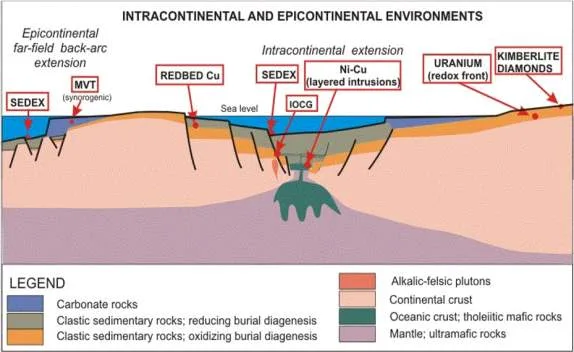
The formation of SEDEX deposits involves a complex interplay of geological and hydrothermal processes. Here is an overview of the key steps in the formation process:
- Source of Metals: The process begins with the existence of a source of metals within the Earth’s crust. This source could be magmatic intrusions or deep-seated mineralized zones.
- Hydrothermal Fluids: As these metal-rich sources are heated by the Earth’s internal heat, hydrothermal fluids are generated. These fluids are enriched with metals like lead, zinc, and silver.
- Migration of Hydrothermal Fluids: The hydrothermal fluids migrate through fractures and faults in the Earth’s crust. These pathways guide the fluids toward the Earth’s surface.
- Interaction with Sediments: The hydrothermal fluids, now carrying a significant load of dissolved metals, interact with sedimentary rocks on the ocean floor. This interaction triggers chemical reactions, leading to the precipitation of ore minerals such as galena and sphalerite.
- Formation of Ore Bodies: The ore minerals settle and accumulate in specific sedimentary horizons, forming ore bodies within the sedimentary basin.
- Influence of Stratigraphy: The stratigraphy of the sedimentary basin plays a crucial role. Certain horizons within the basin, often organic-rich layers, may provide favorable conditions for the precipitation of metal sulfides.
- Black Smoker Activity: In some cases, SEDEX deposits are associated with hydrothermal vent systems, known as black smokers. These are areas where hot, metal-rich fluids are expelled into the ocean. The interaction of these fluids with cold seawater leads to the precipitation of ore minerals.
- Accumulation Over Time: SEDEX deposits grow over time as the hydrothermal fluids continue to interact with sediments. The process is dynamic and can take place over millions of years.
Overview of Sedimentary Exhalative Processes:
Sedimentary Exhalative (SEDEX) processes refer to the release and deposition of minerals from hydrothermal fluids in a sedimentary environment. The key elements of SEDEX processes include:
- Hydrothermal Fluids: These are hot, mineral-rich fluids originating from within the Earth’s crust.
- Sedimentary Environment: SEDEX deposits are typically associated with sedimentary basins, where the hydrothermal fluids interact with sedimentary rocks.
- Chemical Reactions: The interaction between hydrothermal fluids and sediments triggers chemical reactions, leading to the precipitation of ore minerals.
- Stratigraphic Control: The distribution of SEDEX deposits is often controlled by specific horizons within the sedimentary basin, influenced by factors like organic content.
Conditions Favorable for SEDEX Formation:
Several conditions favor the formation of SEDEX deposits:
- Sedimentary Basins: SEDEX deposits are commonly found in sedimentary basins, especially those with favorable geological conditions.
- Presence of Source Rocks: The existence of source rocks containing metals is a prerequisite for SEDEX formation.
- Fracture and Fault Networks: The presence of fractures and faults provides pathways for hydrothermal fluids to migrate toward the surface.
- Stratigraphic Controls: Certain stratigraphic horizons, often organic-rich, can enhance the likelihood of ore mineral precipitation.
- Hydrothermal Venting: The proximity of hydrothermal venting systems, such as black smokers, can contribute to SEDEX formation.
Hydrothermal Vent Mechanism:
Hydrothermal venting is a key mechanism in the formation of SEDEX deposits. It involves the discharge of hot, metal-rich fluids from the Earth’s crust into the ocean. The process can be summarized as follows:
- Heat and Pressure: As the Earth’s crust is subjected to heat and pressure, fluids are generated from magmatic or metamorphic processes.
- Fluid Migration: These fluids, enriched with metals, migrate through fractures and faults in the crust.
- Hydrothermal Venting: When these fluids reach the ocean floor, they are expelled into the water through hydrothermal vents, often referred to as black smokers due to the dark coloration caused by mineral precipitation.
- Interaction with Seawater: The hot hydrothermal fluids interact with cold seawater, causing rapid cooling. This leads to the precipitation of metal sulfides, forming chimney-like structures and contributing to the growth of SEDEX deposits.
In summary, SEDEX deposits are intricately linked to the movement of hydrothermal fluids through the Earth’s crust, their interaction with sediments on the ocean floor, and the unique conditions found in sedimentary basins, especially those associated with hydrothermal venting.
Geological Features of SEDEX Deposits
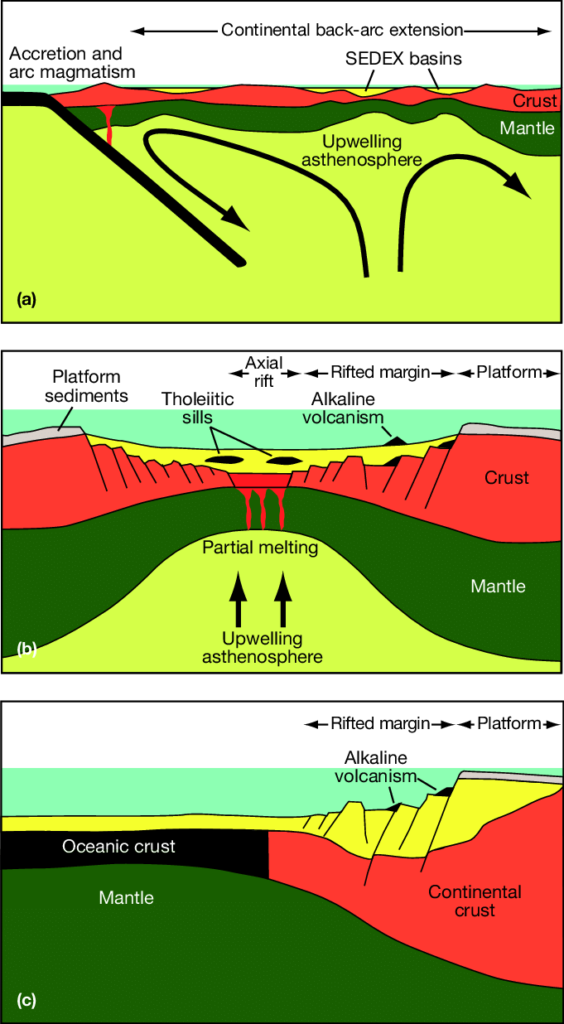
Wilkinson, Jamie. (2013). Sediment-Hosted Zinc-Lead Mineralization: Processes and Perspectives. Treatise on Geochemistry: Second Edition. Chapter 13. 219-249. 10.1016/B978-0-08-095975-7.01109-8.
- Sedimentary Host Rocks: SEDEX deposits are primarily associated with sedimentary rocks, especially those formed in marine environments. Shales and other fine-grained sedimentary rocks often serve as host rocks for these deposits.
- Stratigraphic Horizons: SEDEX deposits are commonly found in specific stratigraphic horizons within sedimentary basins. The distribution of ore minerals is often controlled by the geological and geochemical characteristics of these horizons.
- Bedded Formations: The ore bodies in SEDEX deposits are often bedded, reflecting the layering of sedimentary rocks. The mineralization may occur in distinct layers or lenses within the host rock.
- Organic-Rich Layers: SEDEX deposits may exhibit a preference for organic-rich layers within the sedimentary sequence. The organic material can play a role in facilitating the precipitation of metal sulfides.
- Concordant and Discordant Bodies: SEDEX deposits can occur in both concordant (parallel to bedding) and discordant (cutting across bedding) forms. The orientation and geometry of the ore bodies depend on the geological setting.
- Associated Structures: Fractures, faults, and other structural features in the host rocks may influence the localization and shape of SEDEX deposits. These structures often provide pathways for hydrothermal fluids.
Mineral Composition:
The mineral composition of SEDEX deposits is characterized by the presence of sulfide minerals, with lead, zinc, and silver being the most common economic metals. Key minerals include:
- Galena (PbS): Galena is the primary ore mineral for lead and is commonly found in SEDEX deposits.
- Sphalerite (ZnS): Sphalerite is the primary ore mineral for zinc and is another major component of SEDEX deposits.
- Pyrite (FeS2): Pyrite, a sulfide of iron, is often present in SEDEX deposits, although it may not be a dominant economic mineral.
- Chalcopyrite (CuFeS2): While not as common as galena and sphalerite, chalcopyrite, a copper iron sulfide, may also be found in some SEDEX deposits.
- Silver (Ag): Silver is often associated with galena and may be recovered as a byproduct in the processing of SEDEX ores.
Dominant Minerals:
The dominant minerals in SEDEX deposits are typically galena and sphalerite, which account for the majority of the economic value. The relative abundance of these minerals can vary, influencing the overall economic significance of the deposit. The presence of other sulfides, such as pyrite and chalcopyrite, may also contribute to the mineralogical composition.
Common Associates:
- Barite (BaSO4): Barite is often associated with SEDEX deposits and may occur as gangue minerals within the ore bodies.
- Anhydrite (CaSO4): Anhydrite, a calcium sulfate mineral, is sometimes found as an associate mineral in SEDEX deposits.
- Dolomite (CaMg(CO3)2): Dolomite, a carbonate mineral, may occur as a gangue mineral associated with SEDEX deposits.
- Calcite (CaCO3): Calcite is another carbonate mineral that can be present in SEDEX deposits, often as part of the gangue.
Understanding the mineral composition and common associates is crucial for assessing the economic potential of SEDEX deposits and planning the extraction and processing of the ores. Additionally, the study of associated minerals can provide insights into the geological conditions during the formation of these deposits.
Stratigraphic Setting
SEDEX deposits are commonly associated with specific stratigraphic settings within sedimentary basins. The formation of these deposits is influenced by the geological conditions present in these horizons. Key aspects of the stratigraphic setting include:
- Marine Sedimentary Basins: SEDEX deposits are typically found in marine sedimentary basins where fine-grained sediments accumulate over time. The depositional environment is often characterized by the gradual accumulation of mud, silt, and other sediments on the ocean floor.
- Specific Stratigraphic Horizons: SEDEX deposits tend to occur in particular stratigraphic horizons within sedimentary sequences. These horizons may be enriched in organic material, providing favorable conditions for the precipitation of metal sulfides.
- Interbedded Layers: SEDEX deposits can be associated with interbedded layers within sedimentary sequences. These layers may exhibit variations in composition and may include organic-rich layers that play a role in ore formation.
- Shale and Mudstone Host Rocks: The host rocks for SEDEX deposits are often shale and mudstone, which are fine-grained sedimentary rocks. These rocks provide a suitable matrix for the deposition and preservation of ore minerals.
- Stratigraphic Controls on Mineralization: The distribution and concentration of ore minerals in SEDEX deposits are controlled by the stratigraphy of the sedimentary basin. Specific layers or horizons may act as traps for metal-rich hydrothermal fluids.
Association with Sedimentary Strata:
- Black Shales: SEDEX deposits are frequently associated with black shales, which are organic-rich sedimentary rocks. The organic material in black shales may contribute to the complex chemical interactions that lead to ore mineral precipitation.
- Carbonate Beds: While SEDEX deposits are commonly associated with fine-grained sediments like shales, carbonate beds within sedimentary sequences can also host these deposits. The presence of carbonate minerals may influence the geochemical conditions for ore formation.
- Sulfide-Rich Layers: SEDEX deposits are characterized by layers enriched in sulfide minerals. These layers may alternate with other sedimentary strata and are often distinctive in their mineralogical composition.
- Bedded Formations: SEDEX deposits often exhibit a bedded or layered structure within the sedimentary strata. The ore bodies may follow the bedding planes of the host rocks.
Geological Environments Where SEDEX Deposits are Found:
- Continental Margins: SEDEX deposits are commonly found on continental margins where marine sedimentary basins accumulate. The tectonic activity and subsidence in these regions create suitable conditions for the formation of SEDEX deposits.
- Rift Basins: Sedimentary basins associated with rift zones may host SEDEX deposits. The extensional tectonics in rift environments can create subsiding basins favorable for sediment accumulation.
- Back-Arc Basins: SEDEX deposits are also associated with back-arc basins, which form behind volcanic arcs. The tectonic setting in these areas can provide the necessary conditions for the accumulation of sediment and the formation of SEDEX deposits.
- Subduction Zones: Some SEDEX deposits may be found in regions associated with subduction zones. The interaction of subducting plates and the release of fluids in these settings can contribute to the formation of hydrothermal systems.
- Oceanic Basins: SEDEX deposits may occur in deep oceanic basins where sedimentation takes place over extended periods. Hydrothermal fluids may migrate through the oceanic crust, interacting with sediments to form deposits.
Understanding the geological environments and stratigraphic settings where SEDEX deposits are found is essential for exploration and resource assessment. These deposits are valuable sources of lead, zinc, and silver, and their occurrence is closely tied to specific geological conditions within sedimentary basins.
Global Distribution of SEDEX Deposits
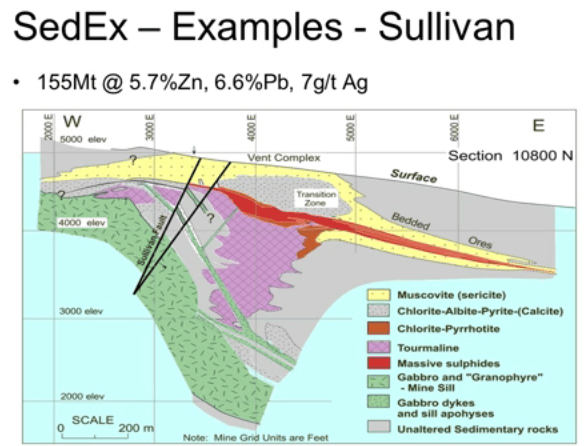
SEDEX (Sedimentary Exhalative) deposits are found worldwide, but certain regions are known for hosting major SEDEX mining operations. The distribution of SEDEX deposits is associated with specific geological settings, including sedimentary basins and tectonic environments conducive to their formation. Here are some notable regions with significant SEDEX deposits:
- Sullivan Deposit, Canada: Located in British Columbia, the Sullivan Deposit is one of the most famous SEDEX deposits. Discovered in 1892, it was a prolific producer of lead, zinc, and silver. The deposit is hosted in the Purcell Supergroup sedimentary rocks.
- Broken Hill, Australia: The Broken Hill Deposit in New South Wales is one of the largest SEDEX deposits globally. It has been a major source of lead, zinc, and silver since its discovery in the 19th century. The deposit is hosted in the Willyama Supergroup sedimentary rocks.
- Isaac Plains, Australia: Situated in the Bowen Basin of Queensland, the Isaac Plains Deposit is another SEDEX deposit contributing to Australia’s substantial production of lead and zinc.
- Red Dog, Alaska, USA: The Red Dog Mine in Alaska is one of the world’s largest zinc producers. The deposit is located in the De Long Mountains within the western Brooks Range and is associated with SEDEX-style mineralization.
- Navan, Ireland: The Navan Deposit, located in County Meath, Ireland, is a significant SEDEX deposit known for its lead and zinc production. It is hosted in Carboniferous sedimentary rocks.
- Rasp Mine, Australia: Located in New South Wales, the Rasp Mine is associated with the Broken Hill orebody and has been a historically important SEDEX mining operation.
- Bou Azzer, Morocco: The Bou Azzer mining district in Morocco is known for its SEDEX-type deposits, including the famous Imiter Mine, which has been a producer of lead and zinc.
- Thalanga, Australia: The Thalanga Mine in Queensland, Australia, is another SEDEX deposit contributing to the country’s lead and zinc production.
- Poland and Germany: The Upper Silesian mining district, spanning parts of Poland and Germany, has SEDEX deposits that have been historically significant for lead and zinc production.
- Yukon, Canada: The Selwyn Basin in the Yukon Territory of Canada is known for SEDEX-style mineralization, and exploration activities have been conducted in the region.
These examples highlight the global distribution of SEDEX deposits and their economic importance in various mining regions. It’s important to note that exploration efforts continue, and new SEDEX deposits may be discovered in different parts of the world as geological understanding and technology advance. The distribution of SEDEX deposits is often associated with the presence of specific sedimentary basins and favorable geological conditions.
Economic Significance of SEDEX Deposits
SEDEX (Sedimentary Exhalative) deposits are economically significant for several reasons, primarily due to their role as sources of lead, zinc, and silver. These metals are crucial for various industrial applications, and as a result, SEDEX deposits play a key role in the global economy. Here are some of the economic significances of SEDEX deposits:
- Lead Production:
- Battery Industry: Lead is a vital component in the production of batteries, particularly in the automotive industry. Lead-acid batteries are widely used in vehicles, providing a reliable and cost-effective energy storage solution.
- Zinc Production:
- Galvanization: Zinc is a critical element in the galvanization process, where it is applied to iron or steel to protect against corrosion. This is crucial in construction, infrastructure, and various industrial applications.
- Alloys: Zinc is used in the production of alloys, such as brass, which is important in the manufacturing of various products, including plumbing fixtures and musical instruments.
- Silver Production:
- Electronics: Silver is a highly conductive metal, making it essential in the electronics industry. It is used in the production of electronic components like conductors and contacts in various devices.
- Photovoltaic Cells: The solar energy industry relies on silver for the production of photovoltaic cells, contributing to the growing renewable energy sector.
- Job Creation and Economic Growth:
- Mining Operations: SEDEX deposits necessitate mining operations, leading to job creation and economic growth in the regions where these deposits are exploited. This includes jobs in exploration, extraction, processing, and transportation.
- Revenue Generation for Governments:
- Royalties and Taxes: Governments receive revenue through royalties and taxes from SEDEX mining operations. This income can contribute to public infrastructure, services, and other development projects.
- Diversification of Economies:
- Resource-Dependent Economies: Countries with significant SEDEX deposits often benefit from the diversification of their economies. Revenue from mining activities can help reduce dependence on a single economic sector.
- Technology and Innovation:
- Mining Technology: The exploration and extraction of SEDEX deposits drive advancements in mining technology and techniques. This contributes to technological innovation in the broader mining industry.
- Global Supply Chains:
- Supply of Metals: SEDEX deposits contribute to the global supply of lead, zinc, and silver, which are essential commodities in various industries. This, in turn, supports global manufacturing and production.
- Investment Opportunities:
- Mining Industry Investments: SEDEX deposits attract investment in the mining sector. Investors may see potential returns in the extraction and processing of lead, zinc, and silver from these deposits.
- Balancing Mineral Supply:
- Market Stability: The presence of SEDEX deposits helps balance the global supply of lead, zinc, and silver, contributing to market stability and ensuring a steady supply of these essential metals.
In summary, the economic significance of SEDEX deposits lies in their role as valuable sources of lead, zinc, and silver, which are crucial components in various industries. The extraction and processing of these metals from SEDEX deposits contribute to economic development, job creation, revenue generation for governments, and technological advancements in the mining sector.
Research and Technological Advances in SEDEX Mining
Research and technological advances in SEDEX (Sedimentary Exhalative) mining have focused on improving exploration techniques, ore processing efficiency, environmental sustainability, and overall operational effectiveness. Here are some key areas of research and technological progress in SEDEX mining:
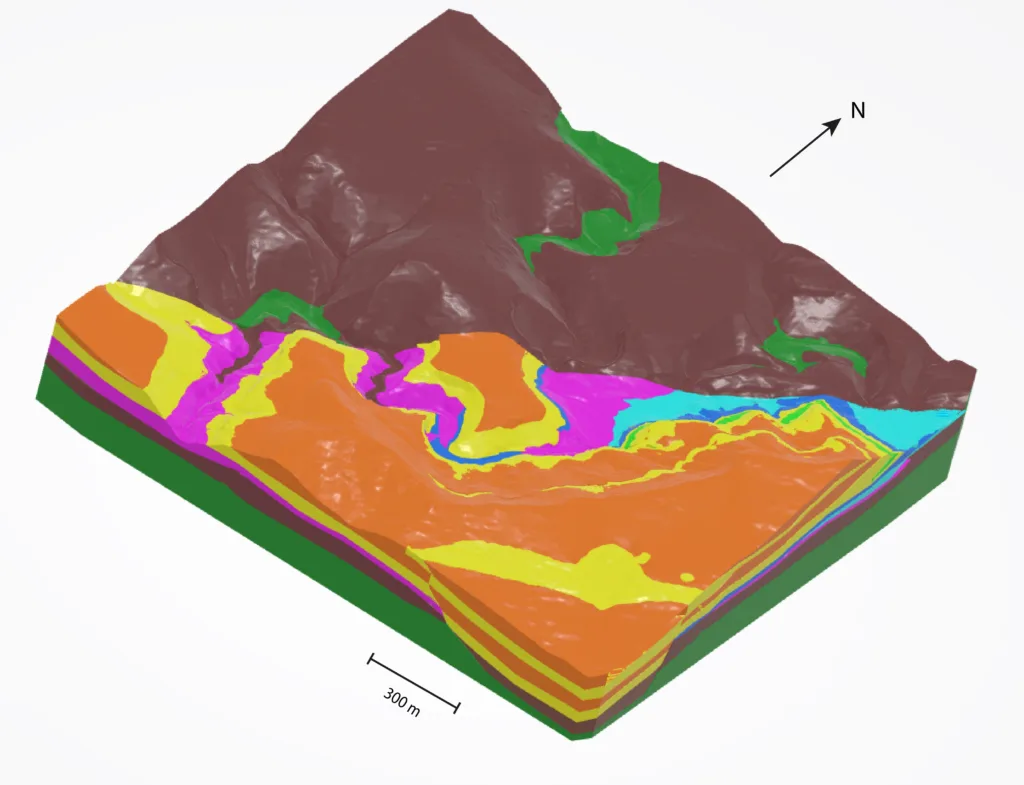
- Exploration Techniques:
- Geophysical Surveys: Advances in geophysical survey methods, such as electromagnetic surveys and gravity surveys, help identify subsurface structures associated with SEDEX deposits more accurately.
- Remote Sensing: Satellite imagery and other remote sensing technologies are increasingly used for regional-scale mapping and identification of potential SEDEX targets.
- Geological Modeling:
- 3D Geological Modeling: The use of advanced modeling software allows for more accurate representation of the subsurface geology, improving the understanding of ore body geometry and distribution within sedimentary basins.
- Drilling Technologies:
- Core Logging Techniques: High-resolution core logging technologies provide detailed information about the mineralogy and stratigraphy of drilled cores, aiding in the interpretation of geological conditions.
- Automated Drilling Systems: Automation and robotics in drilling operations improve efficiency, reduce costs, and enhance safety in exploration and extraction activities.
- Ore Processing Innovations:
- Sensor-Based Ore Sorting: Sensor-based sorting technologies help separate ore from waste materials in real-time during processing, improving overall efficiency and reducing energy consumption.
- Hydrometallurgical Advances: Developments in hydrometallurgical processes enhance the extraction of metals from ore, optimizing recovery rates and minimizing environmental impact.
- Environmental Management:
- Tailings Management: Research focuses on safer and more sustainable tailings disposal methods to minimize the environmental impact of waste materials from SEDEX mining operations.
- Water Recycling and Treatment: Technologies for water recycling and treatment are continually advancing to reduce the environmental footprint of mining activities.
- Sensor Technologies:
- Advanced Analytical Instruments: Integration of advanced analytical instruments, such as X-ray fluorescence (XRF) and mass spectrometry, allows for rapid and accurate analysis of ore samples, aiding in real-time decision-making.
- Drone Technology: Drones equipped with various sensors are used for detailed mapping, monitoring, and surveying of mining sites, providing valuable data for exploration and environmental management.
- Data Analytics and Machine Learning:
- Big Data Analytics: The application of big data analytics helps process large datasets generated during exploration and mining activities, leading to improved ore body modeling and predictive analysis.
- Machine Learning Algorithms: Machine learning algorithms are employed for predictive modeling, optimizing exploration target selection, and enhancing resource estimation accuracy.
- Energy Efficiency:
- Renewable Energy Integration: Exploration and mining companies are exploring the integration of renewable energy sources, such as solar and wind power, to reduce the environmental impact and energy costs of SEDEX mining operations.
- Automation and Robotics:
- Autonomous Vehicles: The use of autonomous vehicles, including trucks and drills, increases safety and operational efficiency in mining activities.
- Robotics in Ore Sorting: Robotic systems are being developed for automated ore sorting, improving the precision of mineral separation processes.
- Collaborative Research Initiatives:
- Industry-Academia Collaborations: Collaboration between mining companies, research institutions, and academia facilitates knowledge exchange and accelerates the development and adoption of new technologies in SEDEX mining.
These advancements collectively contribute to the sustainable and efficient extraction of lead, zinc, and silver from SEDEX deposits while minimizing the environmental impact of mining operations. Ongoing research and technological innovation are essential for addressing challenges and improving the overall sustainability of SEDEX mining practices.
Conclusion
In summary, SEDEX (Sedimentary Exhalative) deposits represent a significant class of mineral deposits formed by the interaction of hydrothermal fluids with marine sedimentary environments. These deposits are economically important due to their role as major sources of lead, zinc, and silver. The geological features of SEDEX deposits include their association with specific stratigraphic horizons, sedimentary basins, and hydrothermal venting systems.
Summary of SEDEX Deposits:
- Formation: SEDEX deposits form through the precipitation of ore minerals from hydrothermal fluids in marine sedimentary basins.
- Geological Features: They are associated with sedimentary host rocks, specific stratigraphic horizons, and often exhibit bedded formations.
- Mineral Composition: Dominated by minerals like galena (lead sulfide), sphalerite (zinc sulfide), and associated sulfides.
- Economic Significance: Crucial for the global supply of lead, zinc, and silver, supporting various industries, including batteries, construction, electronics, and renewable energy.
Importance in the Mining Industry:
- Economic Contribution: SEDEX deposits contribute significantly to the mining industry by providing essential metals for various applications.
- Job Creation: Mining operations associated with SEDEX deposits create employment opportunities in exploration, extraction, and processing.
- Revenue Generation: Governments benefit from royalties and taxes, contributing to public infrastructure and services.
- Global Supply: SEDEX deposits play a role in balancing the global supply of lead, zinc, and silver, supporting diverse industrial sectors.
Outlook for Future Discoveries and Sustainable Exploitation:
- Technological Advances: Ongoing research and technological innovations in exploration techniques, ore processing, and environmental management enhance the efficiency and sustainability of SEDEX mining.
- Environmental Considerations: Continued efforts are being made to develop environmentally friendly mining practices, including tailings management and water recycling.
- Global Exploration: Exploration activities in known SEDEX regions and new frontiers continue, driven by advancements in geophysical surveys, remote sensing, and data analytics.
- Collaborative Initiatives: Industry-academia collaborations and international partnerships contribute to knowledge exchange and the responsible exploitation of SEDEX deposits.
The outlook for SEDEX deposits involves a balance between meeting the growing demand for essential metals and adopting sustainable practices to minimize environmental impact. Continued exploration, research, and technological innovation will play a crucial role in the future of SEDEX mining, ensuring responsible resource exploitation for the benefit of both industry and the environment.


























